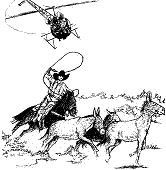Vertebrate Pest Conference Proceedings collection
Date of this Version
March 1984
Abstract
There are six chemicals or groups of chemicals that are currently registered as avicides that can be used in some or all of the U.S. Most of these chemicals, because of their diverse chemical composition and innate toxicological effects, present somewhat different primary and secondary hazards to avian and mammalian predators and scavengers. Of the chemicals reviewed, all appear to present some degree of primary hazard to non-target birds and mammals; however, PA-14, the Starlicide family of chemicals and fenthion appear to be the least hazardous when used according to use directions. 4-Aminopyridine, endrin and strychnine, because of their high acute toxicity and lack of selectivity, must be considered potentially more hazardous. With respect to secondary hazards, the ranking of chemicals changes considerably and only PA-14 appears to present a negligible hazard. The Starlicide family of chemicals presents negligible hazards to most animal species under currently registered uses, but may be potentially hazardous to cats and owls under specific use conditions. Two chemicals, 4-aminopyridine and strychnine, are potentially more hazardous to predatory and scavenger animals due to their highly toxic nature and rapid lethal effects in target species, leaving unassimilated chemical in the gastrointestinal tract. The remaining chemicals, endrin and fenthion, have been shown to possess the potential for more significant secondary poisoning; however, because of restrictive uses, most of the potential hazards have been avoided in operational use.

